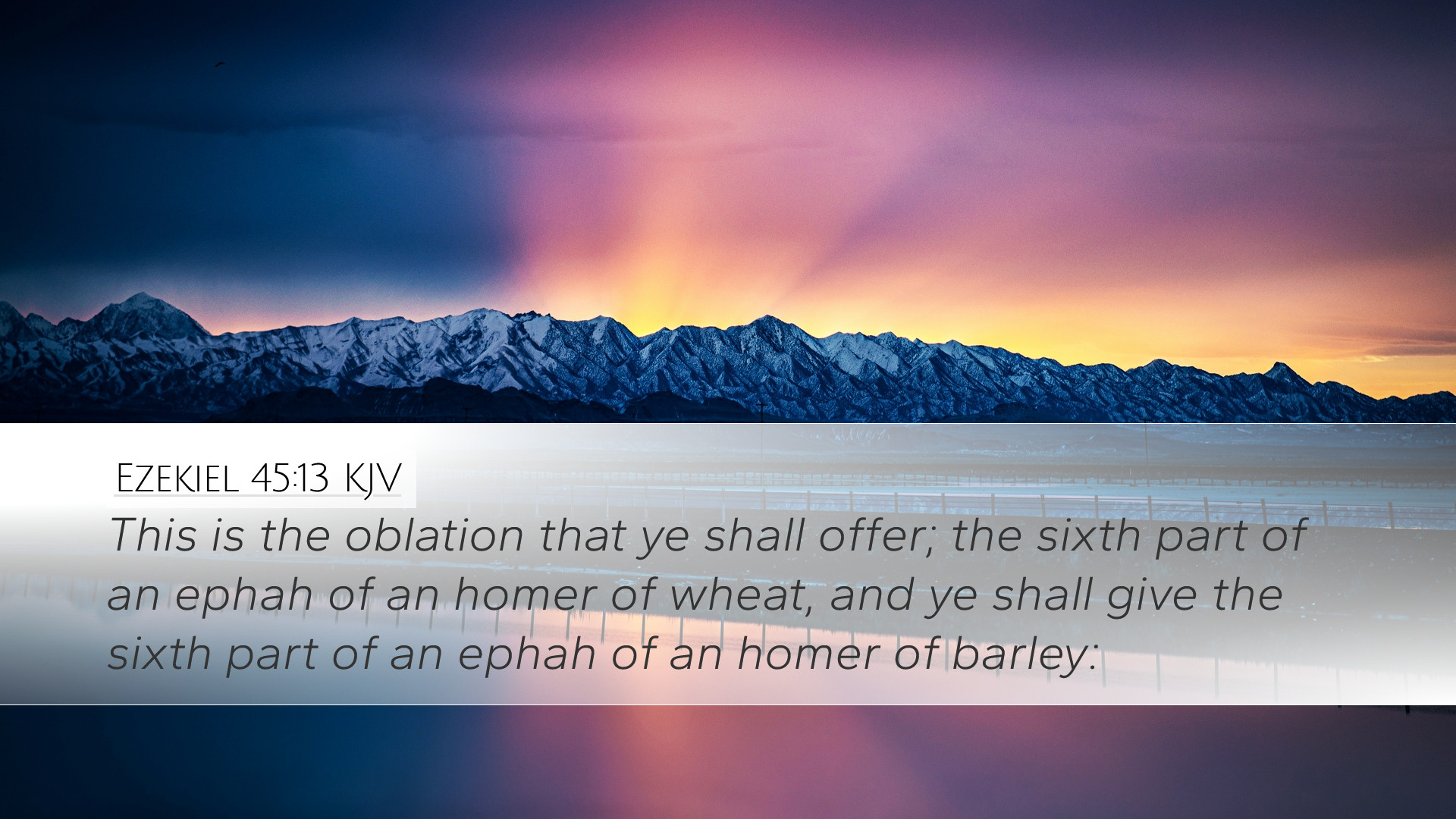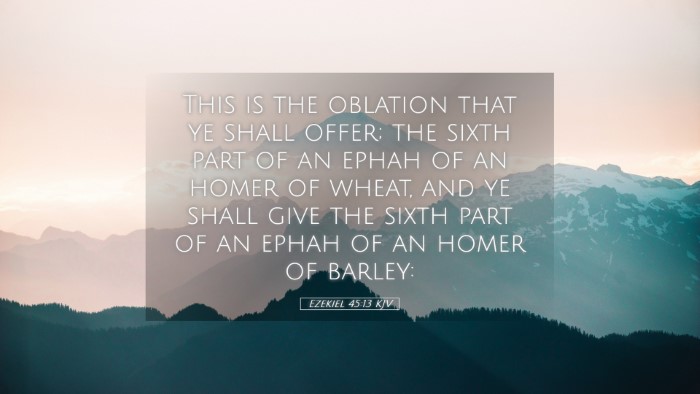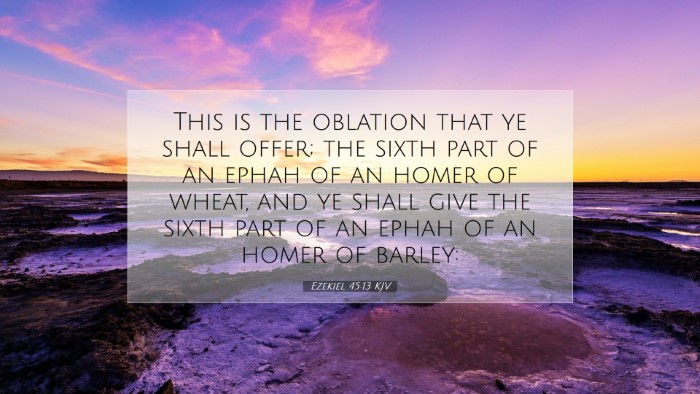Ezekiel 45:13 - Commentary Summary
The verse Ezekiel 45:13 states: "This is the offering that ye shall offer; the sixth part of an ephah of an homer of wheat, and ye shall give the sixth part of an ephah of an homer of barley:" This passage is part of Ezekiel's detailed description of the division of the land and the accompanying offerings and sacrifices to be made in the new temple.
Contextual Overview
The Book of Ezekiel is set during the Babylonian exile, and it serves as a prophetic message to the people of Israel. Chapters 40 through 48 detail the vision of the new temple and the restoration of worship practices, which is critical for Israel's identity as God's chosen people. This specific verse falls under the instructions for offerings, indicating the significance of proper worship and community structure as essential elements in the covenant relationship with God.
Commentary Insights
Matthew Henry
Matthew Henry emphasizes the structured nature of the offerings in this text. He notes that these offerings are indicative of God's providence and the need for His people to offer their best in worship. The specified amounts reflect a proportional contribution that highlights the principle of giving:
- Unity in Worship: The offerings unify the people in their devotion to God, creating a collective responsibility in their worship.
- Standardization of Offerings: The establishment of a standard measure for offerings serves to eliminate confusion and disorder in worship practices.
- God-honoring Sacrifice: The details show that worship must be intentional and honor God, reflecting His holiness and the seriousness of the covenant.
Albert Barnes
Albert Barnes provides further elucidation on the specifics of the offering. He mentions:
- Measurements and Proportions: Barnes points out that the sixth part of an ephah indicates a system of offering that is manageable and not burdensome, which reflects God’s understanding of human limitations.
- Cultivation and Harvesting: The focus on wheat and barley points to agricultural practices and God’s provision for His people. This agricultural imagery serves to remind the Israelites of their dependence on God for sustenance.
- Symbolism of Bread: Since both wheat and barley relate to bread-making, which is a staple food, Barnes links this offering to the spiritual nourishment that comes from obedience and participation in God's covenant.
Adam Clarke
Adam Clarke considers the spiritual analogy of the offering. He shares insights on:
- Covenant Relationship: Clarke interprets the meticulous nature of these offerings as God’s way of reinforcing His covenant. It speaks to the need for order and reverence in relationship with God.
- The Importance of Individual Contribution: Each individual’s contribution, though small in proportion, is vital to the communal offering which symbolizes collective worship.
- Typology of Christ: Clarke also emphasizes that these offerings foreshadow Christ, the ultimate sacrifice. The structure and specific measures correspond to the completeness and sufficiency found in Christ's atonement.
Theological Implications
The offerings described in Ezekiel 45:13 bear significant theological implications:
- Worship as a Response: Worship is a response to God’s grace and providence. The offering reflects a heart of gratitude and acknowledgment of God’s Lordship over every aspect of life.
- Community Identity: The detailed instructions for offerings function as a means to forge a distinct community identity which is rooted in a shared faith and practice.
- Divine Order: The precision in these measurements denotes that God values order and structure in worship, urging believers to approach Him with reverence and intentionality.
Practical Applications
For contemporary pastors, students, and theologians, this passage reinforces several practical applications:
- Teach the Value of Stewardship: Just as the Israelites were called to give specific offerings, believers today are encouraged to view their resources as gifts from God and to steward them faithfully.
- Foster Community Worship: This passage can be used to instill a sense of communal worship that emphasizes the contribution of every member within a church body.
- Encourage Intentionality in Worship: Regularly teaching about the importance of coming to worship with prepared hearts and offerings that honor God can invigorate church practices.
Conclusion
Ezekiel 45:13 is a profound reminder of the need for structured worship and the communal nature of the covenant. The insights from public domain commentaries provide rich layers of understanding that are applicable to both ancient Israel and contemporary believers. Through understanding the responsibilities and blessings associated with offerings, one can appreciate the depth of God’s expectations and the grace He extends to His people.


